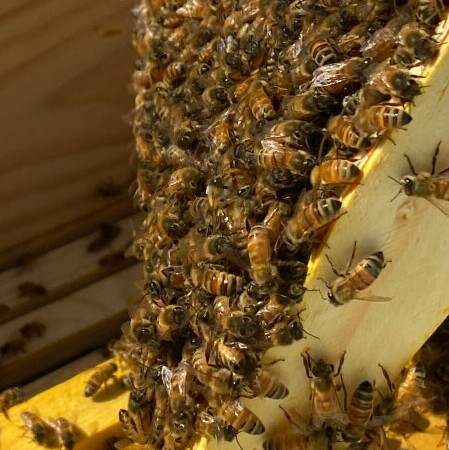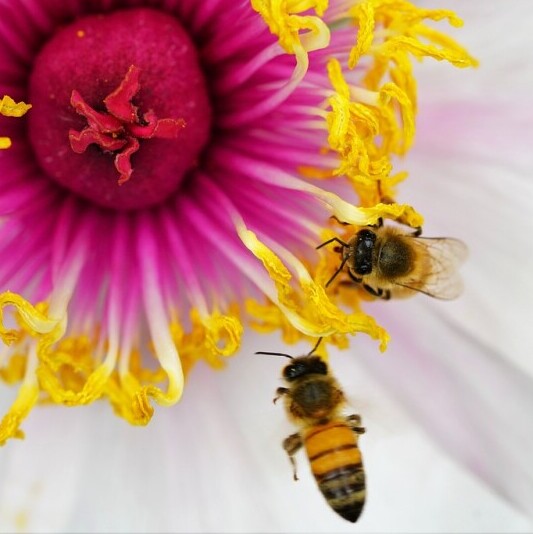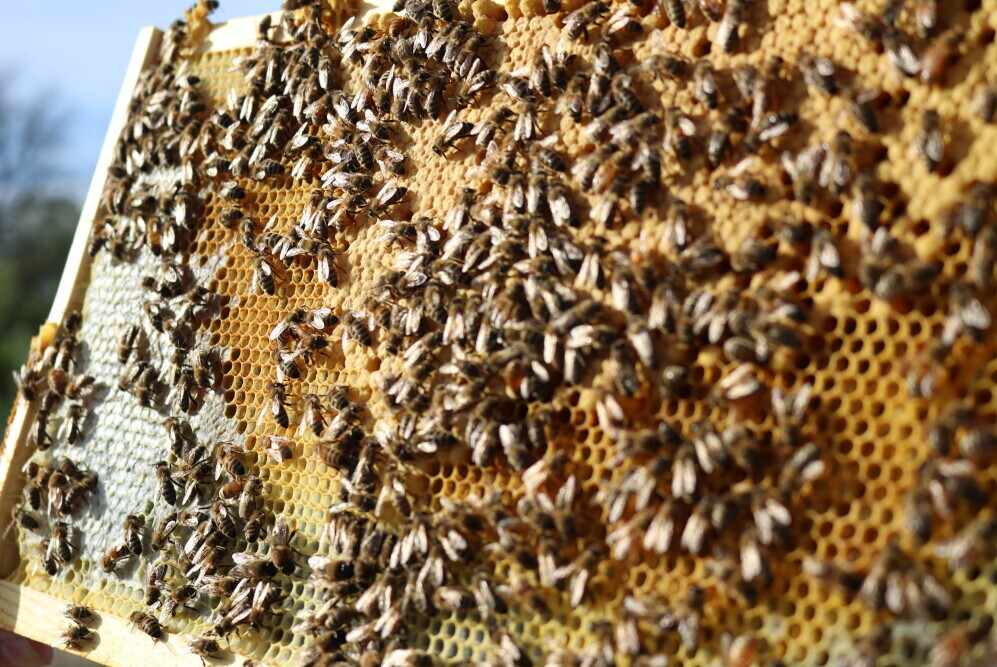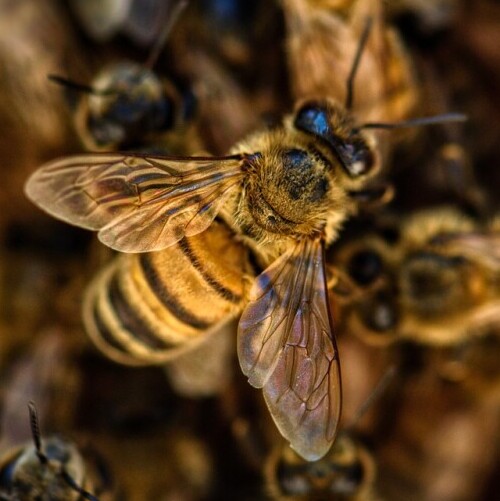Ever stopped and wondered how bees keep such a buzzing hive so organized? These tiny creatures have a lot more going on than just buzzing around flowers. In the hustle and bustle of a beehive, communication is key. It’s almost like they’ve got their little smartphones for chatting, but instead, they dance.
Each bee plays a role in this living, breathing society. They’ve got everything figured out—from where to find the best nectar spots to knowing when danger is looming. How do they manage all this? It’s all in the way they ‘talk’.
Bee communication goes beyond simple survival. It’s their method of keeping the hive functioning like a well-oiled machine. Strong communication means fewer resources wasted and more time for making that delicious honey. Dancing plays a big role here. Yes, you heard me right, bees actually use dance as a main form of communication.
The idea of using movement to share information is an absolute marvel. Picture this: one bee does a specific little jig, and suddenly every other bee knows it’s time to head west for the ‘good stuff’. It’s both fascinating and incredibly complex.

These aren’t just mindless insects; they’re strategic communicators, making sure everyone in the hive is on the same page and working together as one crazy efficient team.
In exploring the dances of bees, you’ll not only discover how they communicate but also how this understanding could help us better co-exist with these crucial pollinators. It’s all connected—with bees, every detail matters. So, let’s get into how it all works.
Diving into the Waggle Dance: A Language of its Own
Picture this: a bee returns to the hive and starts to waggle, moving in a figure-eight pattern. This isn’t just any dance; it’s the waggle dance, a sophisticated means of communication that points the way to food.
Bees use the direction of their dance to tell others where to fly. The angle of the dance in relation to the sun shows the direction, while the length of the waggle run indicates the distance. It’s like giving coordinates on a map, but with flair and a little rhythm.
Not only does the waggle dance direct other bees to resources, but it also conveys quality. A longer duration and a more intense waggle mean the source is rich with nectar. It’s efficient and downright clever.
Experienced forager bees take the lead in mentoring the newbies, showing them the ropes through dance. This sharing of knowledge is crucial for a hive’s success. It ensures that as older bees retire, new ones are ready to take up the challenge of gathering food.

Understanding the waggle dance offers insights into resource allocation and teamwork. It’s a great reminder of how crucial effective communication is, even in the animal world. We can learn a lot from these bees about the power of sharing information efficiently.
To think these tiny creatures developed such an intricate language mostly leaves one in awe. It’s a vibrant example of nature’s complexity and how different species use creative solutions to thrive.
Round Dance – Conveying Proximity and Assurance
Imagine coming back from a quick shop run and letting everyone know that the supermarket’s just around the corner. That’s what the round dance does for bees. It’s their way of saying, ‘Hey, there’s food close by!’ with no need for all that directional dancing in the waggle.
The round dance is pretty straightforward. A bee spins in loops or circles, hyping up the fact there’s a nearby nectar source. The simplicity of this dance doesn’t make it any less important. It’s about quick, efficient communication right when it’s needed.
Younger bees quickly pick up this dance, reinforcing that teamwork within the hive. When all the bees are clued into the nearby resources, it ensures that everyone’s putting in effort where it counts—maximizing the energy the hive gains from each foraging journey.

In many ways, the round dance is about building trust. By relying on each other to signal food proximity, bees can focus their energy on maintaining the hive’s harmony and productivity. This dance is more than just a routine; it’s a critical part of their social structure.
Understanding these dances helps us reflect on the importance of clear and concise communication in any community, bee or human. How can signals in our own environment become an assurance for cooperation and collective success?
The Unspoken Words – Chemical and Vibrational Signals in Bee Communication
Hive life isn’t all about fancy footwork. When you dive deeper into bee communication, you’ll find they use a mix of smells and vibes too. It’s like adding extra notes to their already amazing dance playlist.
Pheromones play a huge role here. Think of pheromones as bee perfume—with a purpose. Queen bees release them to keep the hive orderly and in check, while worker bees use these scents to alert others about urgent matters, like threats or feeding time. It’s basic yet efficient; right on point every time.
But there’s more. Bees also have a knack for using vibrations. It’s not just the kind of rhythm you’d dance to; these are subtle signals conveying urgency. Bees vibrate their bodies to cut through the noise in the busy hive environment, ensuring messages get heard right away.

Combining dances with chemical and vibrational signals helps bees cover all bases. Each form of communication backs each other up, creating a robust system that keeps the hive running smoothly.
Understanding this blend of communication channels can teach us the value of using multiple ways to get our message across. Just like bees, we might find ourselves more effective when we don’t just stick to one form of interaction but mix it up instead.
The Plight of Communication – Challenges and Evolution in the Modern World
In today’s world, bees face more than just natural predators. Rapid environmental changes pose real threats to how they communicate and survive. Shifts in climate and habitat loss can lead to miscommunication within the hive, endangering their survival.
Hybrid bees, resulting from various species intermingling, bring about new communication challenges but also solutions. These hybrids often adapt unique dances that promote resource sharing and resilience.
It’s fascinating to see how bees evolve their language in response to the pressures of modern-day living.
With bees being critical to our ecosystem, decoding their communication is more important than ever. A deeper understanding of their language can spark better conservation efforts and lead to innovative, sustainable beekeeping practices.
For instance, helping maintain diverse flowering plants can ensure bees have reliable food sources, enabling effective communication through dance.

As we decode their signals, we open doors to preserving these vital pollinators for future generations. It’s more than just about keeping bees alive—it’s about understanding and respecting the fragile balance they maintain in our world. That means everyone, from nature enthusiasts to big-time farmers, plays a part.
Bee communication reminds us of the interconnectedness of life. Their dances, chemical markers, and vibrations are small miracles, paying tribute to the complex worlds buzzing all around us.

4 comments on “The Intricacies Of Bee Communication: How Bees Use Dance To Talk”
andrejs
January 31, 2025 at 1:51 pmThe article “The Intricacies Of Bee Communication: How Bees Use Dance To Talk” offers a fascinating glimpse into the world of honeybee communication. It beautifully illustrates how these tiny creatures rely on sophisticated dance movements, such as the waggle and round dances, to share critical information about food sources and hive activity. This level of coordination showcases the remarkable intelligence embedded in nature.
One of the most striking aspects of the article is how it connects bee communication to broader ecological and conservation themes. The discussion on chemical and vibrational signals adds depth, emphasizing that bees don’t just rely on dance—they incorporate multiple layers of messaging. This multifaceted system highlights the efficiency and adaptability of honeybees in maintaining their colonies.
Furthermore, the article raises an important point about modern challenges affecting bee communication, including environmental changes and hybridization. As human activity continues to disrupt natural ecosystems, understanding bee language becomes vital for conservation efforts. The piece serves as a reminder that by protecting bees, we are also safeguarding biodiversity and agricultural stability.
Randi
February 1, 2025 at 4:21 amThanks for your thoughtful comment! Bee communication is truly incredible, and their mix of dance, vibrations, and chemical signals shows just how complex nature can be. It’s so important to understand and protect these tiny pollinators, especially with all the environmental challenges they face. Appreciate your insights!
Daniella
January 31, 2025 at 2:39 pmHi there,
Thank you for sharing this great article!
It’s amazing to think about how these tiny creatures have developed such a sophisticated method of communication to keep their hive organized and efficient. While honeybees are known for their intricate dances, I wonder if other species of bees, like bumblebees or carpenter bees, use a similar system or if they have their own unique methods for sharing information. How do different bee species adapt their communication to fit their environment and needs?
Randi
February 1, 2025 at 4:20 amThanks! Honeybees’ communication is amazing! Bumblebees and carpenter bees don’t waggle dance, but they use vibrations and scent markers instead. Nature’s pretty cool!